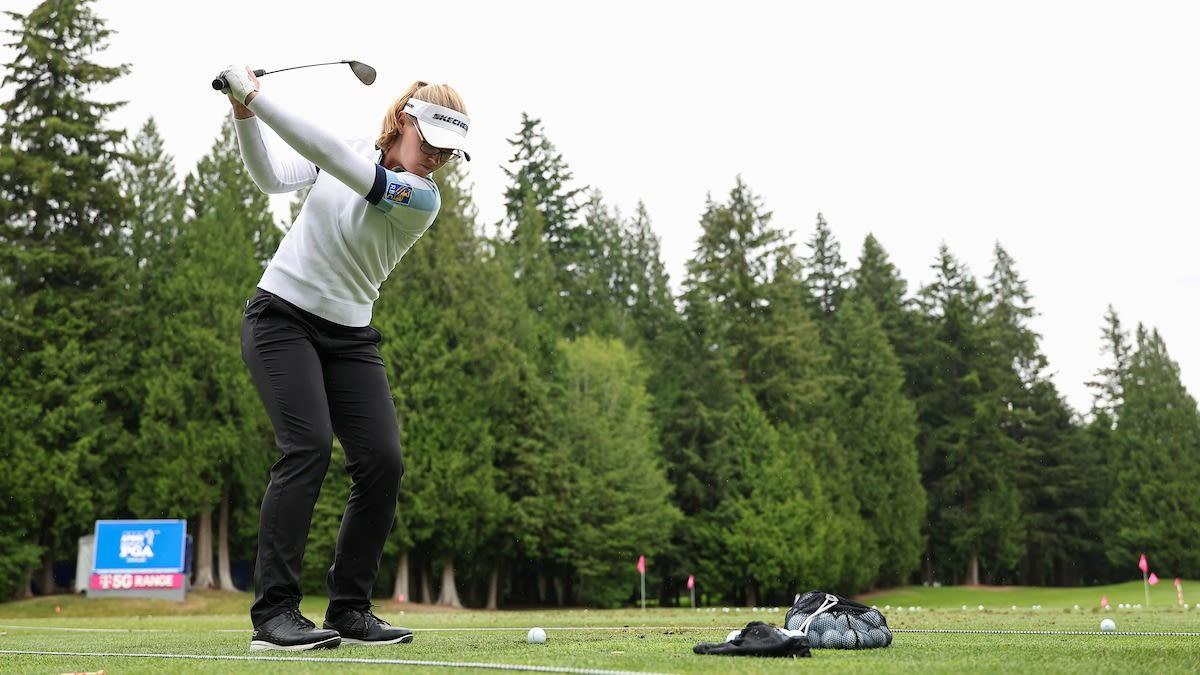Rethinking Golf Advice: Five Myths That May Be holding you back
Golf is a sport rich in tradition and skill, often accompanied by an overwhelming amount of advice.While some tips can genuinely improve a playerS game, others may lead to confusion and frustration on the course. This article delves into five commonly accepted pieces of golf advice that could actually be detrimental to your performance. By dispelling these myths, golfers of all levels can concentrate on more effective strategies that enhance both their skills and enjoyment of the game.
Myth Busting: Common Misconceptions in Golf
The world of golf is filled with conventional wisdom; however, not all of it holds true under scrutiny. A prevalent belief is that a tight grip on the club ensures better control. In reality, gripping to tightly can create tension in your wrists and forearms, negatively affecting your swing. A relaxed grip fosters a more natural motion, ultimately improving shot quality.
Another persistent myth suggests that more practice leads to better performance. while practice is crucial, mindless repetition can reinforce poor habits. Instead of focusing solely on quantity, golfers should prioritize the quality of their training sessions by incorporating drills and seeking professional guidance for measurable progress.
A final misconception involves the idea that you must always keep your head down during your swing. This advice may hinder proper contact with the ball; allowing your head to move naturally throughout your swing helps maintain balance and improves follow-through—key elements for achieving an effective swing.
The Grip Conundrum: Why Customary Techniques Might Hinder Your Game
The grip is often touted as fundamental to a golfer’s success; however, many traditional techniques might do more harm than good. As an example, believing that a ”neutral grip” works for everyone ignores individual differences in hand size and swing style. Rigidly adhering to this concept may prevent players from discovering their unique feel or adapting their grip for optimal comfort and effectiveness.
A common piece of advice states grips should be held tightly for control; however, this creates tension in hands and forearms which disrupts fluidity during swings. A relaxed grip encourages greater clubhead speed while enhancing feedback from the club—leading to improved accuracy and distance.
The importance of grip size cannot be overlooked either; using grips that are too thick or thin can result in inconsistency during play. Experimenting with different sizes allows golfers to find what best suits them—moving away from one-size-fits-all approaches toward personalized solutions.
Swing Dynamics: Reassessing Perfectionism in Your Swing Mechanics
Traditional wisdom emphasizes perfect form as essential for an effective golf swing; recent insights suggest this focus may be misguided. many players believe achieving a textbook swing guarantees success—but this mindset often leads to unneeded tension and inconsistency instead.
Versatility within one’s approach allows adaptation based on individual physicality—a natural flow rather than rigid perfectionism tends toward better performance on course.
The belief that mastering an ideal technique will ensure victory overlooks how diverse swings among professionals vary significantly based on timing, rhythm—and most importantly—confidence rather than strict adherence alone.
by prioritizing these elements over mere posture or grip perfectionism players cultivate more personalized swings tailored specifically towards enhancing gameplay outcomes!
Strategic Course Management: Overcoming Risk Aversion
In terms of course management many golfers feel pressured into taking unnecessary risks due largely due conventional wisdom circulating around greens today! One common suggestion advises “always go after pin.” While aggressive play might yield birdies it also risks disastrous scores if executed poorly! Opting rather aim center green promotes lower scores while building confidence through strategic decision-making!
An additional guideline frequently heard states “never lay up.” This encourages long second shots when faced hazards but executing well-timed layups minimizes risk while promoting higher accuracy approaching greens! Embracing conservative strategies fosters consistency reducing chances landing trouble spots!
A further misconception involves notion “must always play driver’s distance.” Proper management entails knowing when put driver away choosing clubs suited situations especially narrow fairways short par-4s understanding strengths weaknesses driving selection smarter plays aligning challenges presented each hole effectively!

5 Golf Myths You Should Stop Following for Better Performance
Myth 1: You Need to Have a perfect Swing
Many golfers beleive that a flawless swing is the key to better performance. However, this is not entirely true. Here are some insights:
- Every golfer has a unique swing style that works for them.
- Focusing on consistency and accuracy is more beneficial than aiming for perfection.
- Practice and body awareness combined can help you improve your swing efficiency over time.
Practical Tips:
- Record your swing and analyze it with a coach.
- Focus on your grip and stance as foundational elements.
Myth 2: Lowering Your Handicap is All About Equipment
It’s a common misconception that having the latest clubs will drastically improve your game. The truth is:
- While equipment plays a role, your skills, practice, and course strategy are far more critical.
- Many professional golfers use older models of clubs with great success.
- Investing in lessons rather than gear can yield better results.
Case Study:
A study of amateur golfers showed that those who took regular lessons improved their scores more than those who spent the same amount on new clubs.
Myth 3: More Power Equals Better Distance
Golfers often think that swinging harder will send the ball further.However, it’s essential to understand:
- Power isn’t about strength; it’s about technique and timing.
- Improving your follow-through and weight transfer can add more distance without unneeded effort.
Benefits of proper Technique:
| Technique | Advantage |
|---|---|
| Follow Through | Enhances accuracy and power delivery |
| Weight Transfer | Increases stability and swing speed |
Myth 4: Golf is Just a Game of Luck
While luck can play a role in golf, relying solely on it can hinder your progress. Consider these points:
- Every accomplished stroke requires skill, strategy, and mental discipline.
- Understanding the course, wind conditions, and club selection can greatly improve your outcome.
First-Hand Experience:
Countless golfers attest that thoughtful play and preparation lead to consistent performance rather than relying on chance.
Myth 5: The Longer You Practice, the Better You Get
Many believe that longer practice sessions equate to better performance, but it’s not that simple:
- Quality of practice is more important than quantity. Focus on specific skills during each session.
- Taking breaks and allowing your body to recover is vital for retaining what you’ve learned.
Recommendations for Effective Practice:
- Set measurable goals for each practice session.
- Incorporate drills that target your weaknesses.





